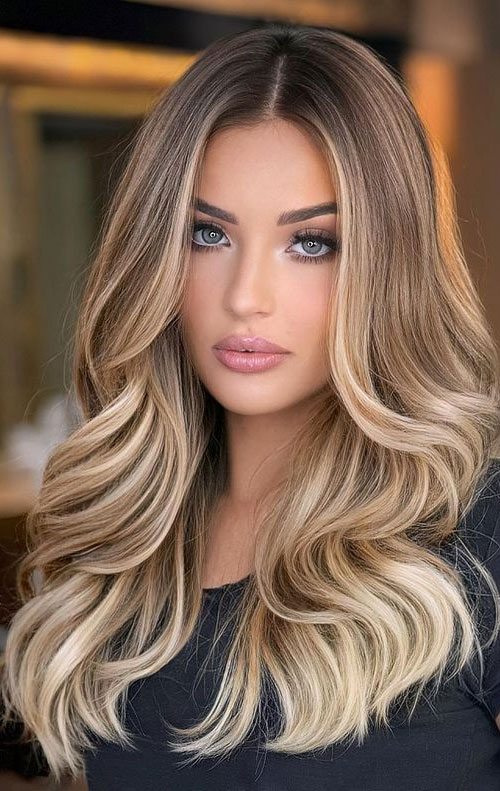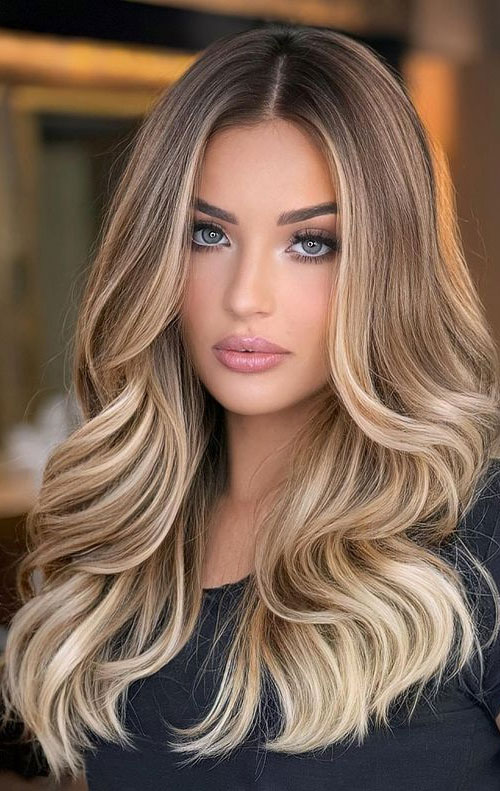The hair industry, a dynamic and ever-evolving behemoth, is far more than just shampoo and haircuts. It’s a multi-billion dollar global market intricately woven with culture, identity, technology, and sustainability. From the latest scientific breakthroughs in hair biology to the meteoric rise of hyper-personalized products and the growing demand for ethical practices, the industry is currently undergoing a transformative period. This article delves into the most significant news and trends shaping the hair world, examining how brands, salons, and consumers are adapting to a rapidly changing landscape.
I. The Digital & Tech Revolution: Smart Hair, Smarter Choices
One of the most profound shifts in the hair industry is the integration of cutting-edge technology. Artificial intelligence (AI), augmented reality (AR), and advanced diagnostics are no longer futuristic concepts but present-day tools revolutionizing how we understand, care for, and style our hair.
A. Hyper-Personalization Driven by AI and Data:
Gone are the days of one-size-fits-all hair care. Consumers now demand products tailored precisely to their unique hair type, concerns, and even environmental factors. AI algorithms are at the forefront of this movement. Online quizzes, sometimes combined with image analysis or even DNA testing, feed data into AI systems that then recommend bespoke product formulations. Companies like Prose, Function of Beauty, and even established giants like L’Oréal are leveraging AI to create custom shampoo, conditioner, and treatment blends, promising optimal results based on individual needs. This not only boosts consumer satisfaction but also reduces product waste by ensuring efficacy.
B. Augmented Reality for Virtual Try-Ons:
AR technology is transforming the consumer experience, particularly in hair color and styling. Apps and in-store mirrors now allow users to virtually "try on" different hair colors, cuts, and styles before committing. This interactive experience minimizes risk and enhances confidence, driving purchases. L’Oréal’s Style My Hair app and various salon platforms are prime examples, offering a glimpse into how AR is becoming an indispensable tool for both consumers and stylists.
C. Advanced Diagnostic Tools:
The scalp, often overlooked, is gaining recognition as the foundation of healthy hair. Innovations in diagnostic tools, such as microscopic scalp cameras and AI-powered hair analysis devices, provide detailed insights into scalp health, hair density, cuticle damage, and moisture levels. These tools empower stylists to recommend targeted treatments and allow consumers to track their hair health journey with unprecedented precision. This "skinification" of hair care emphasizes treating the scalp with the same diligence as facial skin.
D. Smart Styling Devices:
The internet of things (IoT) is also making its way into hair tools. Smart hair dryers and stylers can adapt heat settings based on hair type and moisture levels, minimizing damage. While still a niche market, these intelligent devices promise a future where styling is not only easier but also healthier for the hair.
II. The Green Wave: Sustainability and Ethical Beauty at the Forefront
Environmental consciousness is no longer a niche concern but a mainstream expectation. The hair industry is responding with significant strides towards sustainability, ethical sourcing, and reduced environmental impact.
A. Clean Beauty and Ingredient Transparency:
Consumers are increasingly scrutinizing ingredient lists, demanding "clean" formulations free from sulfates, parabens, silicones, phthalates, and other potentially harmful chemicals. Brands are responding by reformulating products, emphasizing natural, organic, and plant-derived ingredients. Transparency about ingredient sourcing and manufacturing processes is becoming a key differentiator. The rise of certifications like Ecocert and COSMOS further guides consumers towards truly clean and sustainable options.
B. Eco-Friendly Packaging and Refill Models:
Plastic waste is a major environmental challenge, and the hair industry is a significant contributor. Brands are innovating with packaging solutions, including post-consumer recycled (PCR) plastic, biodegradable materials, glass, aluminum, and solid formats (shampoo bars, conditioner bars) that eliminate the need for plastic bottles entirely. Refill programs, both in-store and through subscription services, are gaining traction, encouraging consumers to reuse existing containers and significantly reduce their plastic footprint.
C. Waterless and Water-Efficient Products:
Water scarcity is a growing global concern. The industry is exploring waterless formulations, such as dry shampoos, concentrated formulas, and solid products, which require less water during manufacturing and use. Salons are also adopting water-saving technologies and practices, from specialized showerheads to more efficient washing techniques.
D. Ethical Sourcing and Fair Trade:
Beyond environmental impact, ethical considerations are paramount. Consumers are increasingly seeking brands that commit to fair trade practices, ensuring that ingredients are sourced responsibly and that workers throughout the supply chain are treated fairly and paid living wages. Cruelty-free certifications (like Leaping Bunny) and vegan formulations are also non-negotiable for a growing segment of the market.
III. Embracing Diversity & Inclusivity: A Hair Story for Everyone
For too long, the beauty industry has often catered to a narrow ideal. The hair industry is finally making significant strides towards genuine diversity and inclusivity, reflecting the rich tapestry of global hair types and textures.
A. The Textured Hair Movement:
The recognition and celebration of textured hair (curly, coily, wavy, Afro hair) is one of the most impactful trends. Brands are investing heavily in research and development to create specific product lines that cater to the unique needs of these hair types, moving beyond generic "anti-frizz" solutions. Education for stylists on how to cut, color, and care for textured hair is also expanding, addressing a historical gap in professional training. This shift is empowering individuals to embrace their natural hair, fostering a sense of pride and self-acceptance.
B. Broader Shade Ranges and Gender Neutrality:
Hair color brands are expanding their palettes to offer a wider range of shades that complement diverse skin tones. Furthermore, the industry is increasingly adopting gender-neutral marketing and product lines, recognizing that hair care is for everyone, regardless of gender identity. Packaging, branding, and advertising are evolving to be more inclusive and less stereotypical.
C. Representation in Media and Advertising:
Authentic representation in advertising campaigns and social media is crucial. Brands are featuring a wider array of models of different ages, ethnicities, body types, and hair textures, helping to normalize diverse beauty standards and make consumers feel seen and valued.
IV. The Evolving Consumer & Market Dynamics
Consumer behavior is shifting, driven by greater access to information, social media influence, and a desire for both efficacy and experience.
A. The Informed Consumer:
Today’s consumers are highly informed. They research ingredients, read reviews, and seek out brands that align with their values (e.g., sustainable, cruelty-free, inclusive). This has led to a demand for greater transparency from brands and a willingness to switch products if they don’t meet these criteria.
B. The Experience Economy in Salons:
While DIY hair care is popular, the salon experience remains vital. Salons are transforming into wellness sanctuaries, offering personalized consultations, advanced treatments, and a luxurious, relaxing atmosphere. The focus is shifting from a mere service to an holistic experience that caters to both physical and mental well-being.
C. Social Media and Influencer Marketing:
Platforms like TikTok, Instagram, and YouTube continue to be powerful drivers of trends and product discovery. Haircare routines, styling tutorials, and product reviews by influencers can rapidly elevate a product or brand to viral status. Brands are investing heavily in influencer collaborations and creating engaging content to connect directly with consumers.
D. Subscription Models and Direct-to-Consumer (DTC):
Subscription boxes for personalized hair care products and DTC models are thriving. These allow brands to build direct relationships with customers, gather valuable data, and offer convenience and tailored solutions.
V. Health, Wellness & The Scalp Care Renaissance
The focus on overall health and wellness has extended firmly into hair care, with scalp health taking center stage.
A. "Skinification" of Hair Care:
Borrowing concepts from skincare, the hair industry is emphasizing active ingredients like hyaluronic acid, ceramides, peptides, and prebiotics in scalp and hair formulations. Products are designed to address specific scalp concerns such as dryness, oiliness, sensitivity, and flakiness, recognizing that a healthy scalp is the prerequisite for healthy hair growth.
B. Hair Loss Solutions:
Hair loss and thinning remain significant concerns for many. The market for solutions, including topical treatments, supplements, growth serums, and even clinical procedures, is expanding rapidly. Research into ingredients like minoxidil, finasteride alternatives, and natural extracts continues to push innovation in this segment.
C. Stress and Lifestyle Impact:
The understanding that stress, diet, and overall lifestyle significantly impact hair health is growing. Brands are developing products that address these holistic factors, often incorporating adaptogens, essential oils, and formulations designed to combat environmental stressors.
VI. The Future: Challenges and Opportunities
The hair industry, while booming with innovation, also faces challenges. Supply chain disruptions, rising raw material costs, and the need for continuous education for professionals are ongoing concerns. However, these challenges also present opportunities for resilience, innovation, and strategic partnerships.
The trajectory of the global hair industry points towards a future that is increasingly personalized, sustainable, inclusive, and technologically advanced. Brands and professionals who embrace these shifts, prioritize transparency, and genuinely connect with consumer values will not only survive but thrive in this exciting and ever-evolving landscape. The hair industry is truly having its "mane event," proving that our relationship with our hair is as complex, dynamic, and vital as ever.

